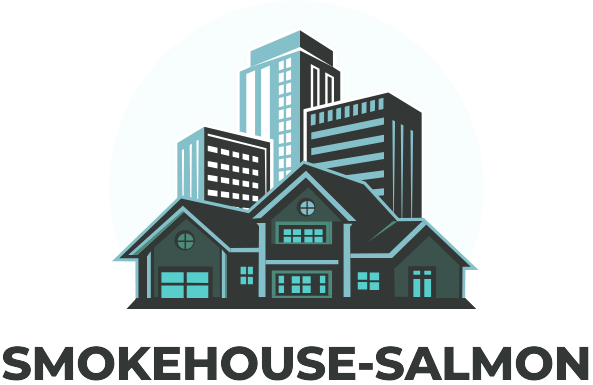In the fast-paced world of real estate, standing out is crucial. Enter aerial photography—the superhero of property marketing. Picture this: stunning bird’s-eye views that make homes look like they belong in a magazine. With a drone in the sky, agents can showcase properties from angles that even the most ambitious buyers can’t resist.
Not only does aerial photography capture the beauty of the property, but it also highlights the surrounding area—parks, schools, and those charming coffee shops that make a neighborhood truly special. It’s like giving potential buyers a VIP tour without them ever leaving their couch. So, if agents want to elevate their listings and leave a lasting impression, it’s time to embrace the sky-high perspective. After all, who wouldn’t want to buy a house that looks like it’s floating on cloud nine?
Table of Contents
ToggleUnderstanding Aerial Photography
Aerial photography plays a crucial role in real estate marketing. It leverages advanced technology to capture stunning images from above, showcasing properties in an engaging manner.
What Is Aerial Photography?
Aerial photography involves taking photographs from an elevated position, often using drones. This technique offers unique perspectives that ground-level images can’t match. Captured images highlight not only the property but also its surrounding areas, such as gardens or nearby amenities. Drones equipped with high-resolution cameras provide clarity and detail, elevating the overall presentation of listings.
Benefits of Aerial Photography for Real Estate
Aerial photography presents numerous advantages for real estate agents. It enhances property visibility, attracting potential buyers’ attention. Engaging visuals encourage online sharing, increasing exposure across social media platforms. Aerial shots effectively showcase large properties, revealing landscape features that ground photos overlook. Agents using aerial images often find listings receive more inquiries, leading to faster sales.
Equipment and Tools Needed


Aerial photography requires specific equipment and tools to capture high-quality images for real estate listings. Essential gear includes advanced cameras and drones, along with editing software for post-production.
Cameras and Drones
High-resolution cameras enhance image quality significantly. DSLR or mirrorless cameras with at least 20 megapixels yield crisp visuals that attract buyers. Drones equipped with 4K cameras provide stunning aerial views. Popular drone options include the DJI Mavic Air 2 and the Phantom 4 Pro, both known for their stability and camera performance. Choosing drones with automated shooting modes simplifies the process, allowing agents to focus on capturing captivating angles and views.
Editing Software
Editing software plays a crucial role in refining aerial images. Programs like Adobe Lightroom and Photoshop enable real estate agents to adjust colors, contrast, and sharpness. Using these tools enhances the overall appearance of photos, making properties more appealing. Incorporating features like HDR processing allows for impressive depth and detail. Agents should also consider user-friendly options like Canva for quick edits and social media graphics, making posting on online platforms seamless.
Best Practices for Aerial Photography
Aerial photography requires strategic planning and strict safety measures. Implementing best practices ensures high-quality imagery that effectively showcases properties.
Planning Your Shots
Prioritize the time of day for optimal lighting, with early mornings and late afternoons offering the best conditions. Identify key features that need emphasis, such as the property’s unique architecture and nearby amenities. Plan the flight path carefully to avoid obstacles and capture diverse angles, maximizing the impact of the visuals. Select weather conditions that ensure clear skies and minimal wind to avoid blurriness or unstable footage. Consider the composition of each shot, framing visuals to enhance the property’s appeal while highlighting surrounding areas.
Safety Considerations
Adhere to local regulations regarding drone usage to prevent legal issues. Always maintain visual line-of-sight with the drone during operation to ensure control. Inspect equipment before flights, checking for battery levels and any possible damage. Avoid flying over crowds or private properties without permission, mitigating safety risks. Use safety equipment, such as propeller guards and first-aid kits, to prepare for emergencies. Keeping these safety guidelines in mind fosters a responsible approach to aerial photography, ensuring a successful experience.
Marketing Properties with Aerial Photography
Aerial photography significantly transforms property marketing strategies for real estate agents by providing captivating visuals that attract buyers’ attention.
Enhancing Online Listings
Aerial images greatly improve online listings by showcasing properties from unique, eye-catching perspectives. Agents can illustrate large yards, adjacent amenities, and surrounding landscapes, giving potential buyers a comprehensive view of the property. Listings featuring aerial shots typically generate more viewer engagement, which translates to increased inquiries and faster sales. Incorporating aerial photography into property videos and virtual tours complements traditional images, creating a portfolio that stands out in crowded markets. Utilizing high-resolution imagery also enhances professionalism, establishing credibility and boosting buyer confidence.
Utilizing Social Media
Social media platforms thrive on engaging content, making aerial photography a powerful marketing tool for real estate agents. Stunning aerial shots grab attention in feeds, prompting users to share and comment, which expands an agent’s online reach. Agents should post regular updates that feature eye-catching aerial views to maintain audience interest. It’s effective to include drone footage on platforms like Instagram and Facebook, where visual content dominates. Posts showcasing unique perspectives or highlighting neighborhood attractions can spark conversations and draw in prospective clients. Integrating relevant hashtags increases visibility, attracting more followers and creating opportunities for higher engagement.




